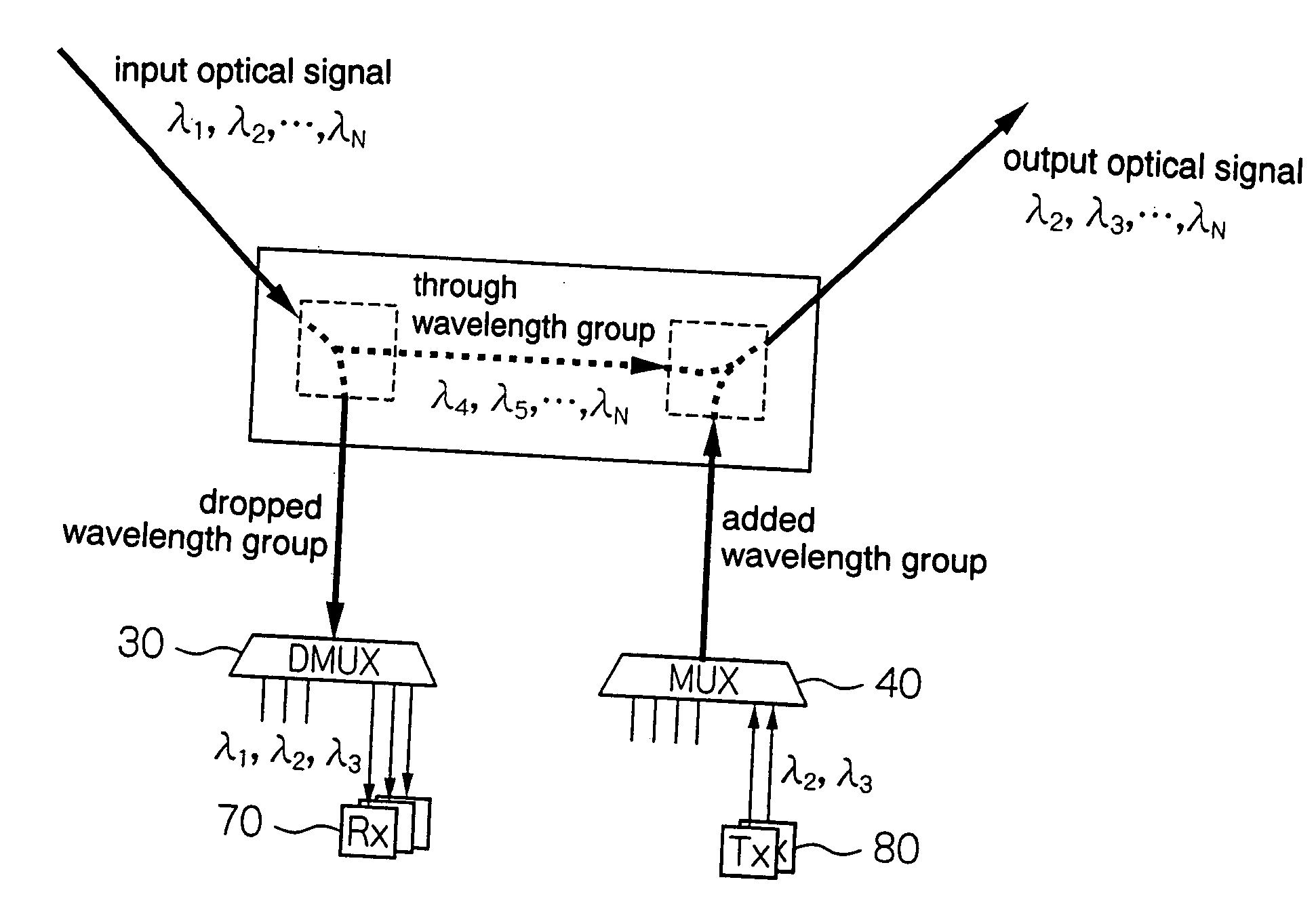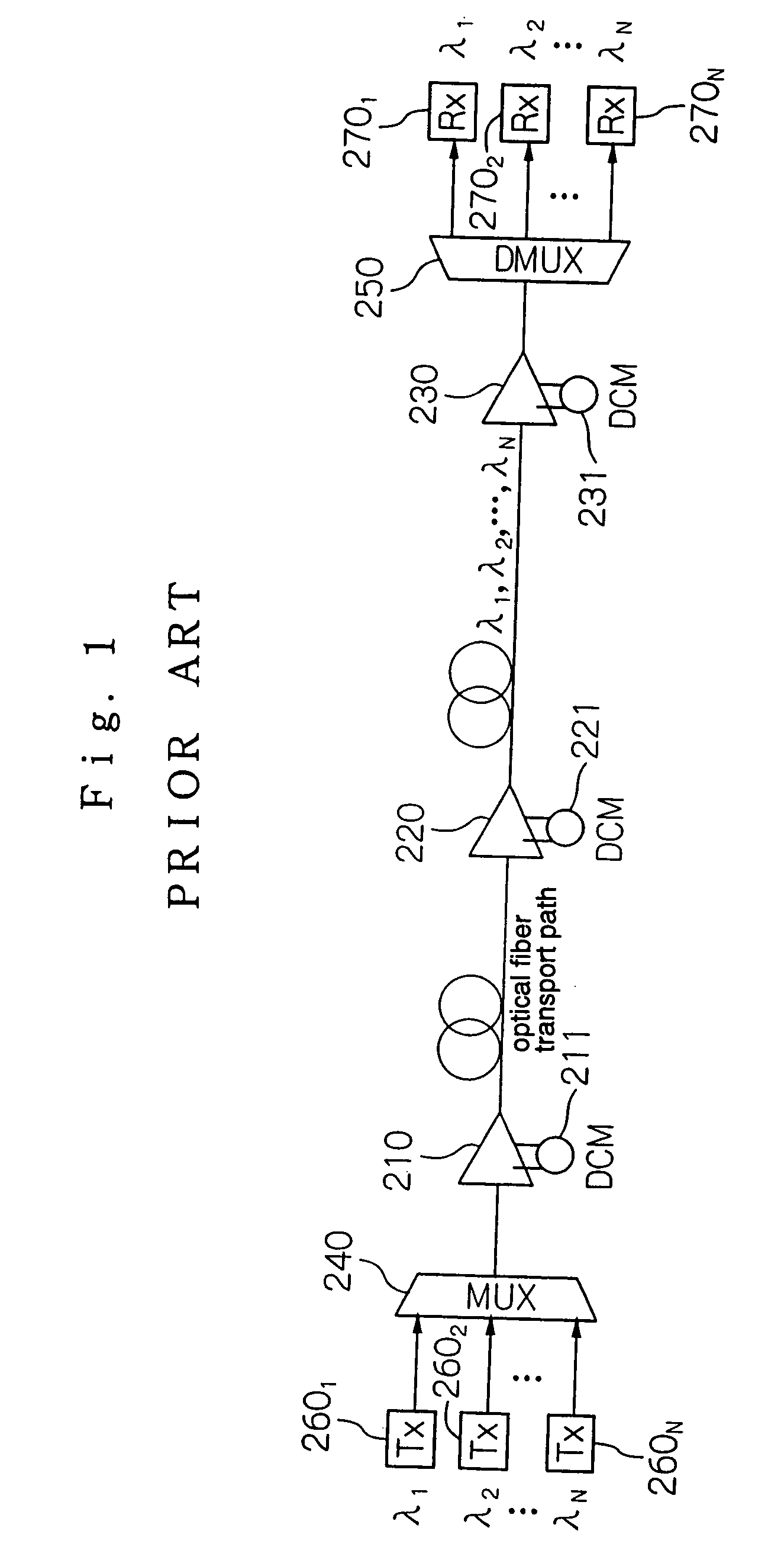Optical communication apparatus, optical communication system and method for transmitting optical signal
a communication apparatus and optical communication technology, applied in multiplex communication, multiplex communication, wavelength-division multiplex systems, etc., can solve the problems of serious signal waveform distortion, cost of converting all wavelength-division-multiplexed signals, and the signal cannot be properly received by the receiving terminal station, etc., to achieve the best signal transmission performance
- Summary
- Abstract
- Description
- Claims
- Application Information
AI Technical Summary
Benefits of technology
Problems solved by technology
Method used
Image
Examples
1st exemplary embodiment
[0118] Optical communication apparatus according to a first embodiment of the present invention, which has two MUXs, will be described below with reference to FIGS. 15 through 18.
[0119] According to the first embodiment, the principles of the present invention are applied to the conventional OADM node shown in FIG. 3 which is currently in most widespread use. The optical communication apparatus according to the first embodiment has new MUX 41 in addition to the conventional arrangement, thereby having two MUXs 40, 41 to provide a path for an added wavelength group, and also has auxiliary DCM 60 (or 61) inserted in the path for an added wavelength group. The arrangement according to the first embodiment makes it possible to provide different values of dispersion when a wavelength-division-multiplexed optical signal is transmitted and received.
[0120] Though the conventional arrangement has single MUX 40, the optical communication apparatus according to the first embodiment has two M...
PUM
 Login to View More
Login to View More Abstract
Description
Claims
Application Information
 Login to View More
Login to View More - R&D
- Intellectual Property
- Life Sciences
- Materials
- Tech Scout
- Unparalleled Data Quality
- Higher Quality Content
- 60% Fewer Hallucinations
Browse by: Latest US Patents, China's latest patents, Technical Efficacy Thesaurus, Application Domain, Technology Topic, Popular Technical Reports.
© 2025 PatSnap. All rights reserved.Legal|Privacy policy|Modern Slavery Act Transparency Statement|Sitemap|About US| Contact US: help@patsnap.com



